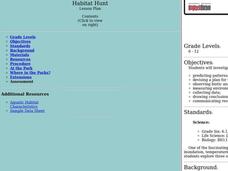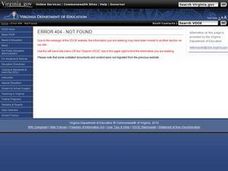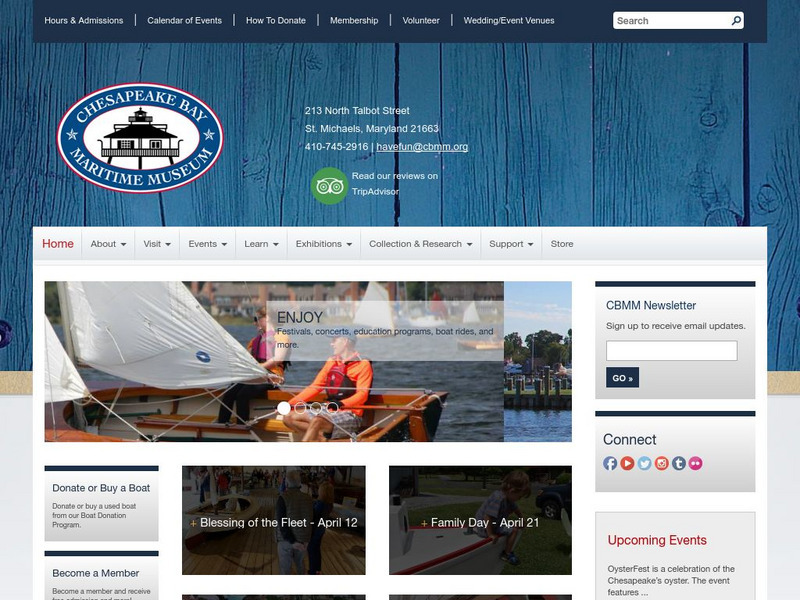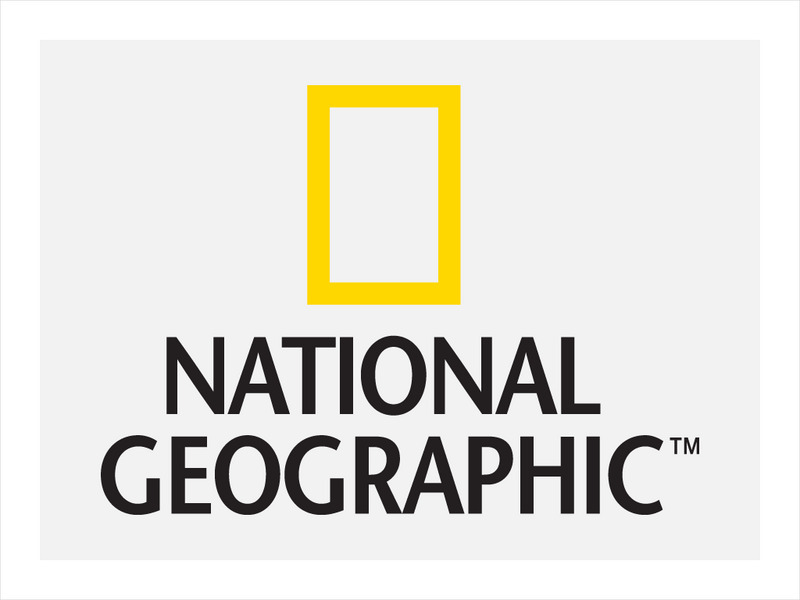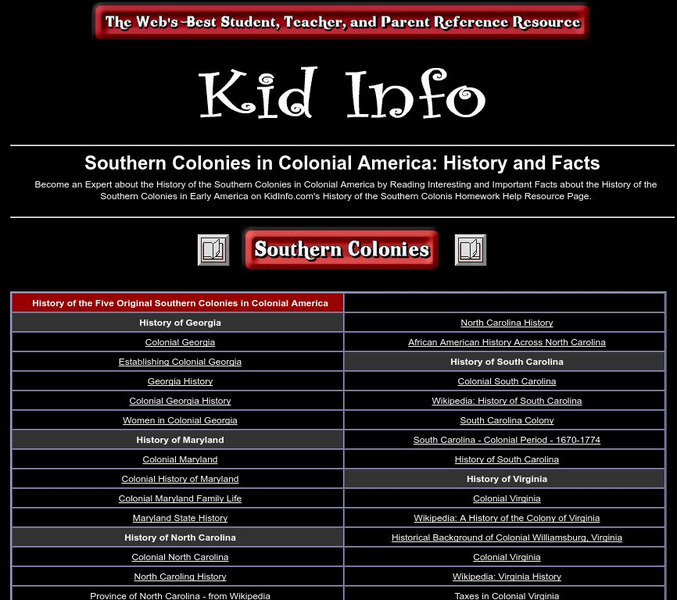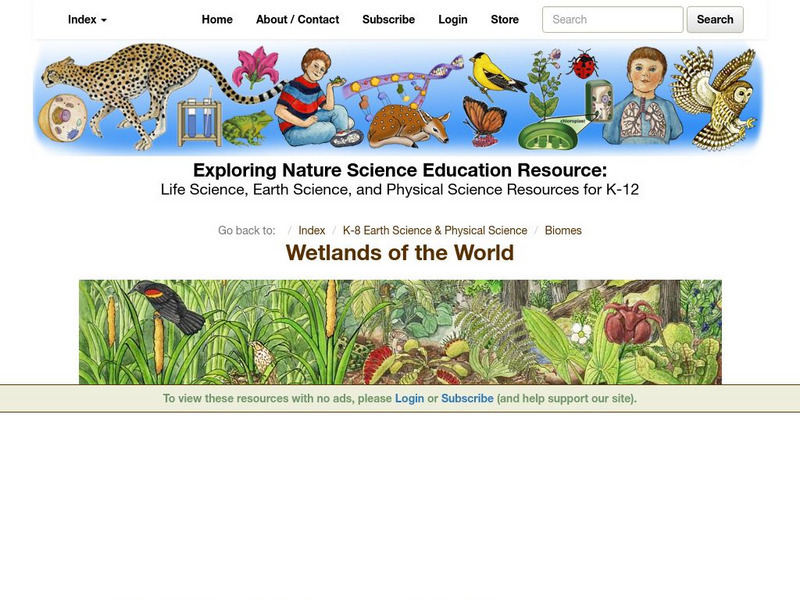Curated OER
Marine Debris on the Chesapeake Bay
Students examine problem of litter and marine debris on the Chesapeake Bay, and experiment with density of marine debris.
Curated OER
Marsh March
Students investigate natural organization of a wetland and the interrelationships between the wetland and the surrounding environment.
Curated OER
Who Killed SAV?
Learners research the factors that contributed to the decline of submerged aquatic vegetation in the Chesapeake Bay. Students evaluate the natural and human factors that led to the decline of bay grasses.
Curated OER
Captain John Smith's Chesapeake Bay
Middle schoolers conduct research to determine how the Chesapeake Bay has changed since the 17th century when Captain John Smith first explored it. Students read from Smith's historical documents.
Curated OER
Captain John Smith's Chesapeake Bay
Fifth graders explore Captain John Smith and compare today's Chesapeake Bay to the one in the early 17th century.
Curated OER
C. B. Atlas Animations: Temperature Experiments
Learners investigate cooling rates of shallow and deep water, analyze Chesapeake Bay temperature information, and interpret effects of temperature variations on living organisms.
Library of Congress
Loc: American Treasures: Cornwallis's Defeat at Yorktown
A great map showing the arrangement of French ships during the French blockade at the Chesapeake Bay during the siege of Yorktown. From a collection at the Library of Congress.
Thinkport Education
Mpt: Exploring Maryland's Roots: The Colony Begins (1634 1640)
In-depth site includes videos and interactive learning activities to help you learn more about Maryland as it was being founded. Play the game that lets you build your own plantation and find out all the problems colonists faced in...
Other
Baltimore Co. Public Schools: Chesapeake Bay Food Webs (Online Research Model)
Food webs lesson, which focuses on Chesapeake Bay habitats, integrates biological concepts with literacy knowledge and skills. Lesson directs students to answer the question, how does a human-caused stress placed on the environment...
Other
Chesapeake Bay Maritime Museum
This great site offers information about the Chesapeake Bay, its history, people and it's stories. "Tour" the museum to find interesting information.
National Humanities Center
National Humanities Center: America in Class: Failed European Colonies in the New World
Lesson that examines some of the reasons European efforts to establish colonies in the New World were often met with failure. It focuses on the story of nine Jesuit priests who started a small colony on Chesapeake Bay in the hopes of...
NOAA
Noaa: Chesapeake Bay Interpretive Buoy System: Data in the Classroom
NOAA Smart Buoys collect and transmit real-time weather, water conditions, and water quality data. Chesapeake Exploration gives teachers and their students unprecedented access to lessons designed around real-time observational data from...
Mariners' Museum and Park
Mariners' Museum: Watermen of the Chesapeake
In this resource, students can meet the modern-day watermen of the Chesapeake Bay region. Find out about their day-to-day struggles with living and working within the nation's largest estuary system.
National Geographic
National Geographic: Exploring the Chesapeake: Then and Now
Resource provides an interactive map that takes you to places on the Chesapeake Bay that John Smith explored and you find out the historical events that occurred. Pictures and drawings of time accompany the explanations.
Mariners' Museum and Park
Mariners' Museum: Chesapeake Bay: Our History and Our Future
Learn about the culture, history, and ecology of the Chesapeake Bay estuary. Follow activities of the Bay through time to learn how it has been an important part of our country's past and present times. Also find out why it is important...
BSCS Science Learning
Bscs: Chesapeake Bay Algal Blooms
In this inquiry, students engage with mapping data to determine what kind of land coverage is contributing the most to harmful algal blooms in the Chesapeake Bay Watershed. Click on the link for teacher resources for teaching guides and...
Other
Bscs: Restoring Oyster Reefs
In this self-directed lesson plan, students use data from the Chesapeake Bay estuary to determine suitable sites for oyster reef restoration. A handout with everything the student needs to complete this lesson plan is available as a PDF...
Library of Congress
Loc: Teachers: Photos From Great Depression: Jacob Have I Loved
A collection of images from the period of the Great Depression to World War II provide students with visual references as they read and examine Katherine Paterson's novel, "Jacob Have I Loved." Lesson encourages critical thinking about...
Other
Kid Info: Southern Colonies in Colonial America: History and Facts
This reference guide to online information about the Southern Colonies includes a wide variety of links related to southern colonial America.
Other
Prince William County Public Schools: The Regions of Virginia
Contains a list of instructional strategies in teaching about Virginia's five regions. Also includes links to printable maps and background information.
Exploring Nature
Exploring Nature Educational Resource: Wetlands of the World
A set of illustrated fact pages and activity sheets on different wetlands ecosystems, e.g. the Florida Everglades and Chesapeake Bay.
National Wildlife Federation
National Wildlife Federation: Chesapeake Bay
Take a closer look at the Chesapeake Bay, one of the world's largest active estuaries. Find out about the local people, wildlife, and what is threatening the area.
Library of Congress
Loc: America's Story: Maryland
Did you know about the Chestertown Tea Party? Why is there the Mason and Dixon line? What is a "Jimmy?" The Library of Congress provides this article of fun facts about Maryland.


